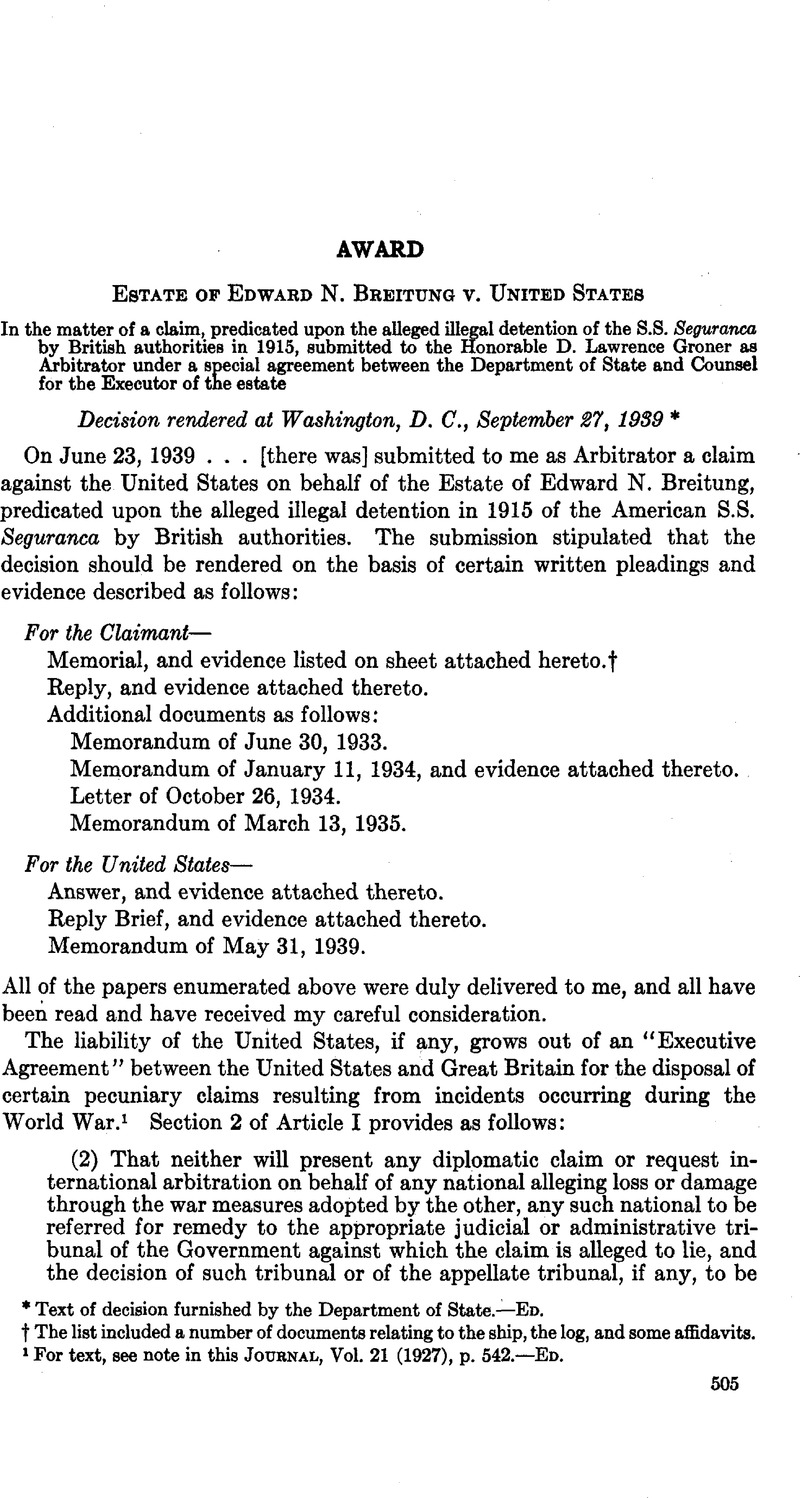No CrossRef data available.
Published online by Cambridge University Press: 12 April 2017

* Text of decision furnished by the Department of State.—Ed.
† The list included a number of documents relating to the ship, the log, and some affidavits.
1 For text, see note in this Journal, Vol. 21 (1927), p. 542.—Ed.
2 The French Prize Court found that Breitung had obtained the Dacia by transfer from von Novelly, E., who had in turn purchased her from the former German owners. Von Novelly had arranged the contract for shipment of the cotton to Bremen. In accordance with French prize law, the Dacia was condemned because her transfer to American registry was evade capture and to continue her in trade with the enemy. Foreign Relations of the U. S., 1915 Supp., p. 508. [See also this Journal, Supplement, Vol. 33 (1939), pp. 886–687.— ED.]Google Scholar
3 Telegram of Secretary Bryan to the Ambassador to Great Britain, dated March 30, 1915, Foreign Relations of the United States, 1915 Supp., p. 152.
4 Foreign Relations of the United States, 1915 Supp., p. 105.
5 The Kim, [1915] p. 215, 3 L.P.C. 167.
6 The Olinde Rodrigues, supra; The Springbok, 5 Wall. 1; The Dashing Wave, 5 Wall. 170; The Thompson, 3 Wall. 155.
7 The Stigstad, [1919] A.C. 279; The Sigurd, [1917] p. 250.
8 The Remonstrant, 6 L.P.C. 329, 341.
9 The Baron Stjernblad, [1918] A.C. 173, 175.